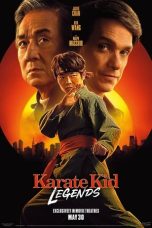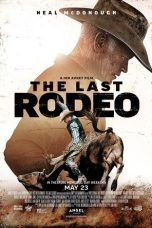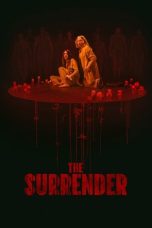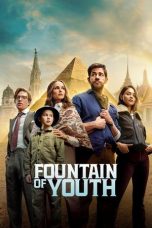The Mission (1986) Movie Review: A Poignant Tale of Faith, Conflict, and Redemption
Introduction
The Mission (1986) is a haunting and visually stunning historical drama that explores themes of faith, colonialism, and redemption. Directed by Roland Joffé and starring Robert De Niro, Jeremy Irons, and Liam Neeson, the film is set in the lush and treacherous jungles of South America during the 18th century. It tells the story of Jesuit missionaries who establish a mission to protect a remote indigenous tribe from the encroaching colonial forces of Spain and Portugal. With its powerful narrative, breathtaking cinematography, and an unforgettable score by Ennio Morricone, The Mission remains a poignant and moving cinematic experience.
Plot Summary
The film opens with a harrowing scene of a Jesuit missionary being martyred by the Guarani people, a native tribe in South America. Undeterred, Father Gabriel (Jeremy Irons), a Jesuit priest, decides to travel to the remote region to continue the work of converting the indigenous population to Christianity. Through his gentle and compassionate approach, he earns the trust of the Guarani and establishes a thriving mission in the heart of the jungle.
Meanwhile, the film introduces Rodrigo Mendoza (Robert De Niro), a mercenary and slave trader who is deeply troubled after killing his own brother in a fit of jealousy. Wracked with guilt and despair, Mendoza seeks redemption and is taken in by Father Gabriel, who encourages him to join the mission. Mendoza undergoes a profound spiritual transformation, renouncing his violent past and dedicating himself to the service of the Guarani.
However, the peace and harmony of the mission are threatened when the Spanish and Portuguese governments, under pressure from the Catholic Church, decide to seize control of the land and enslave the indigenous people. As the colonial forces close in, Father Gabriel and Mendoza face a moral dilemma: whether to resist the invasion with violence or to remain true to their faith and principles of non-violence.
Performances and Character Development
The performances in The Mission are nothing short of extraordinary. Jeremy Irons delivers a serene and understated performance as Father Gabriel, embodying the priest’s unwavering faith and deep compassion. His portrayal is both moving and inspiring, capturing the quiet strength of a man who is willing to sacrifice everything for his beliefs.
Robert De Niro, in one of his most complex roles, portrays Rodrigo Mendoza with intensity and depth. De Niro’s depiction of Mendoza’s transformation from a ruthless mercenary to a man seeking redemption is powerful and nuanced. His character’s internal struggle and eventual spiritual awakening are central to the film’s emotional impact.
Liam Neeson, in an early role, plays Father Fielding, a fellow Jesuit who supports Father Gabriel’s mission. While his role is smaller, Neeson’s presence adds to the film’s strong ensemble cast. The supporting cast, including the indigenous actors portraying the Guarani, contributes to the film’s authenticity and emotional resonance.
Cinematography and Score
One of the most striking aspects of The Mission is its breathtaking cinematography. Chris Menges, the film’s director of photography, captures the lush beauty and dangerous wildness of the South American jungle with stunning clarity. The film’s visual style is both grand and intimate, reflecting the majesty of the natural world and the deep spiritual journey of its characters.
Complementing the visuals is Ennio Morricone’s unforgettable score, which is widely regarded as one of the greatest film soundtracks of all time. Morricone’s music enhances the emotional depth of the story, with themes that range from the hauntingly beautiful to the profoundly tragic. The film’s main theme, featuring a combination of indigenous instruments and traditional orchestral elements, is particularly memorable and has become iconic in its own right.
Themes and Historical Context
The Mission explores profound themes of faith, morality, and the clash between cultures. The film delves into the complexities of colonialism, highlighting the devastating impact of European expansion on indigenous populations. Through the characters of Father Gabriel and Mendoza, the film examines different responses to injustice—non-violent resistance versus armed conflict—and the moral ambiguities that arise in such situations.
The film also raises important questions about the role of the Church in colonialism, particularly the tension between the Jesuits’ mission to protect and convert the Guarani and the broader political interests of the Catholic Church and European powers. The Mission does not offer easy answers, instead presenting a nuanced and thought-provoking exploration of these historical issues.
Streaming and Availability
For viewers in the United States, The Mission (1986) is available on several streaming platforms:
- Amazon Prime Video: Available for rental or purchase in HD.
- Apple TV: Offers the film for rental or purchase with HD streaming.
- Google Play Movies & TV: Provides options to rent or buy, with streaming in various formats.
- Vudu: Available for rent or purchase, with HD streaming options.
- YouTube Movies: Offers rental and purchase options, with HD streaming.
These platforms make it easy to watch The Mission online and experience this powerful film.
Conclusion
The Mission (1986) is a deeply moving and visually stunning film that explores complex themes of faith, morality, and the impact of colonialism. With extraordinary performances by Jeremy Irons and Robert De Niro, breathtaking cinematography, and an unforgettable score by Ennio Morricone, the film stands as a masterpiece of historical drama.
Whether you’re a fan of epic storytelling, historical films, or simply appreciate beautiful cinema, The Mission is a must-watch. With its availability on various streaming platforms, there’s no better time to revisit this classic or discover it for the first time.

















